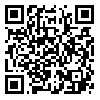Volume 8 - Pre-proof (Accepted manuscript)
pbp 2026, 8 - Pre-proof (Accepted manuscript): 0-0 |
Back to browse issues page
Download citation:
BibTeX | RIS | EndNote | Medlars | ProCite | Reference Manager | RefWorks
Send citation to:



BibTeX | RIS | EndNote | Medlars | ProCite | Reference Manager | RefWorks
Send citation to:
Asghari R. Phytotherapy in Breast Cancer: An Overview. pbp 2026; 8
URL: http://pbp.medilam.ac.ir/article-1-300-en.html
URL: http://pbp.medilam.ac.ir/article-1-300-en.html
Department of Internal Medicine, School of Medicine, Imam Khomeini Hospital, Urmia University of Medical Sciences, Urmia, Iran , rahimasghari@gmail.com
Abstract: (971 Views)
Objective: Breast cancer is one of the most prevalent malignancies affecting women worldwide, typically presenting as a palpable mass or structural changes in breast tissue. Its development is influenced by multiple factors, including genetic predisposition, hormonal imbalances, and environmental exposures. Early detection and effective treatment are critical for improving survival and quality of life. This review aims to identify and examine the key medicinal plants cited in Iranian traditional medicine for breast cancer, with a focus on their potential mechanisms in prevention and therapy.
Methods: A comprehensive literature search was conducted using keywords such as “medicinal plants,” “traditional medicine,” “breast cancer,” and “Iran” across major databases, including PubMed, Scopus, Web of Science, and Google Scholar. Authoritative texts and specialized encyclopedias were also consulted.
Results: The review identified a wide range of plants with therapeutic potential, including thyme, rosemary, pennyroyal, ginger, fennel, garlic, grape, artemisia, purslane, chamomile, pinto bean, tomato, chickpea, onion, wheat, pomegranate, red apple, cherry, turmeric, flaxseed, borage, olive, yarrow, sweet violet, celery, chasteberry, licorice, turnip, oat, aloe vera, calendula, green tea, carrot, and red pepper. These plants exert their effects through multiple mechanisms, such as inhibiting tumor cell proliferation, inducing apoptosis, suppressing angiogenesis, and modulating inflammatory responses.
Conclusion: Evidence suggests that medicinal plants traditionally used in Iranian medicine, owing to their rich bioactive compound content, hold promise as complementary strategies for breast cancer prevention and management. Further clinical and experimental studies are necessary to support the development of safer and more effective therapeutic options.

Methods: A comprehensive literature search was conducted using keywords such as “medicinal plants,” “traditional medicine,” “breast cancer,” and “Iran” across major databases, including PubMed, Scopus, Web of Science, and Google Scholar. Authoritative texts and specialized encyclopedias were also consulted.
Results: The review identified a wide range of plants with therapeutic potential, including thyme, rosemary, pennyroyal, ginger, fennel, garlic, grape, artemisia, purslane, chamomile, pinto bean, tomato, chickpea, onion, wheat, pomegranate, red apple, cherry, turmeric, flaxseed, borage, olive, yarrow, sweet violet, celery, chasteberry, licorice, turnip, oat, aloe vera, calendula, green tea, carrot, and red pepper. These plants exert their effects through multiple mechanisms, such as inhibiting tumor cell proliferation, inducing apoptosis, suppressing angiogenesis, and modulating inflammatory responses.
Conclusion: Evidence suggests that medicinal plants traditionally used in Iranian medicine, owing to their rich bioactive compound content, hold promise as complementary strategies for breast cancer prevention and management. Further clinical and experimental studies are necessary to support the development of safer and more effective therapeutic options.

Received: 2025/04/14 | Accepted: 2025/10/30 | Published: 2026/01/1
Send email to the article author
| Rights and permissions | |
 |
This work is licensed under a Creative Commons Attribution-NonCommercial 4.0 International License. |



